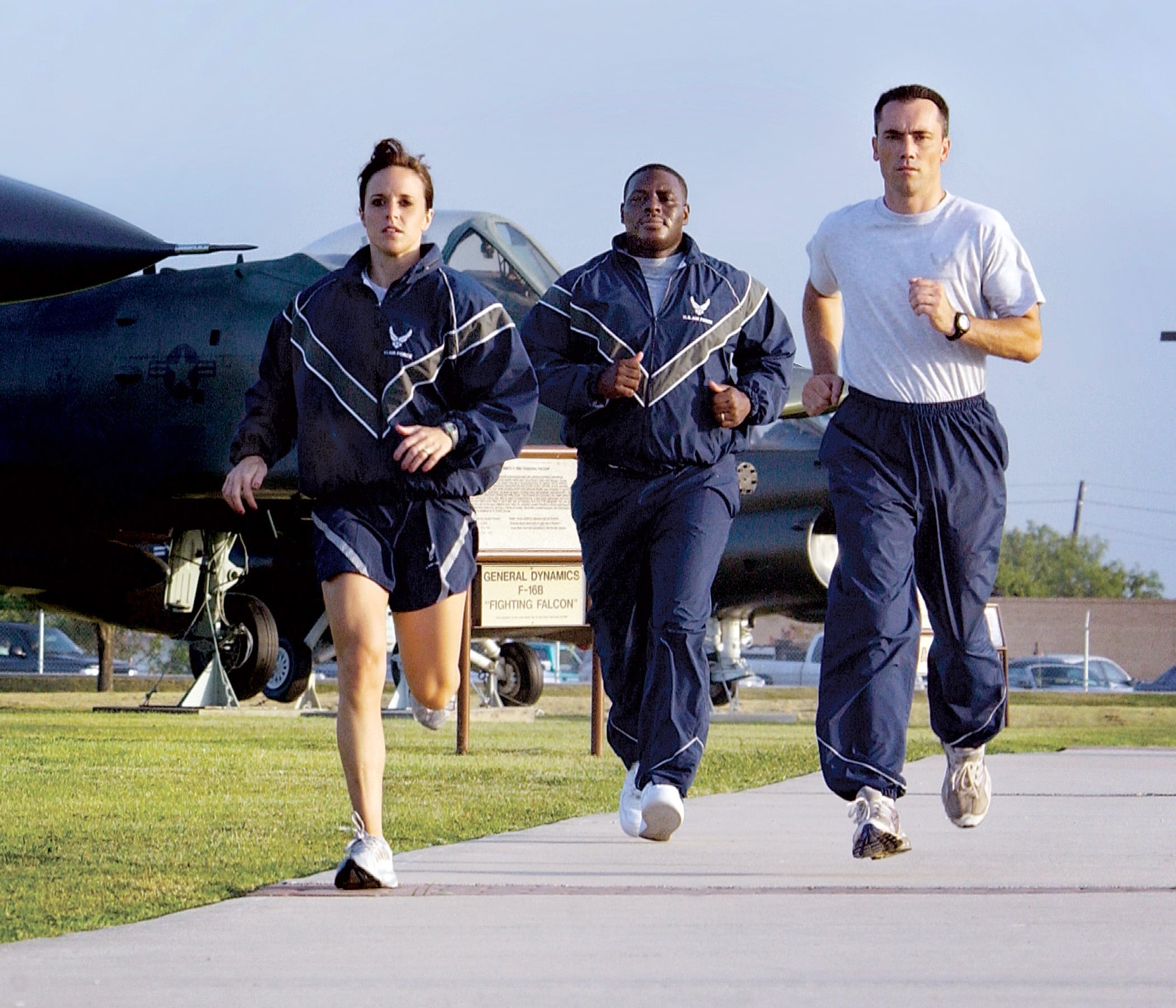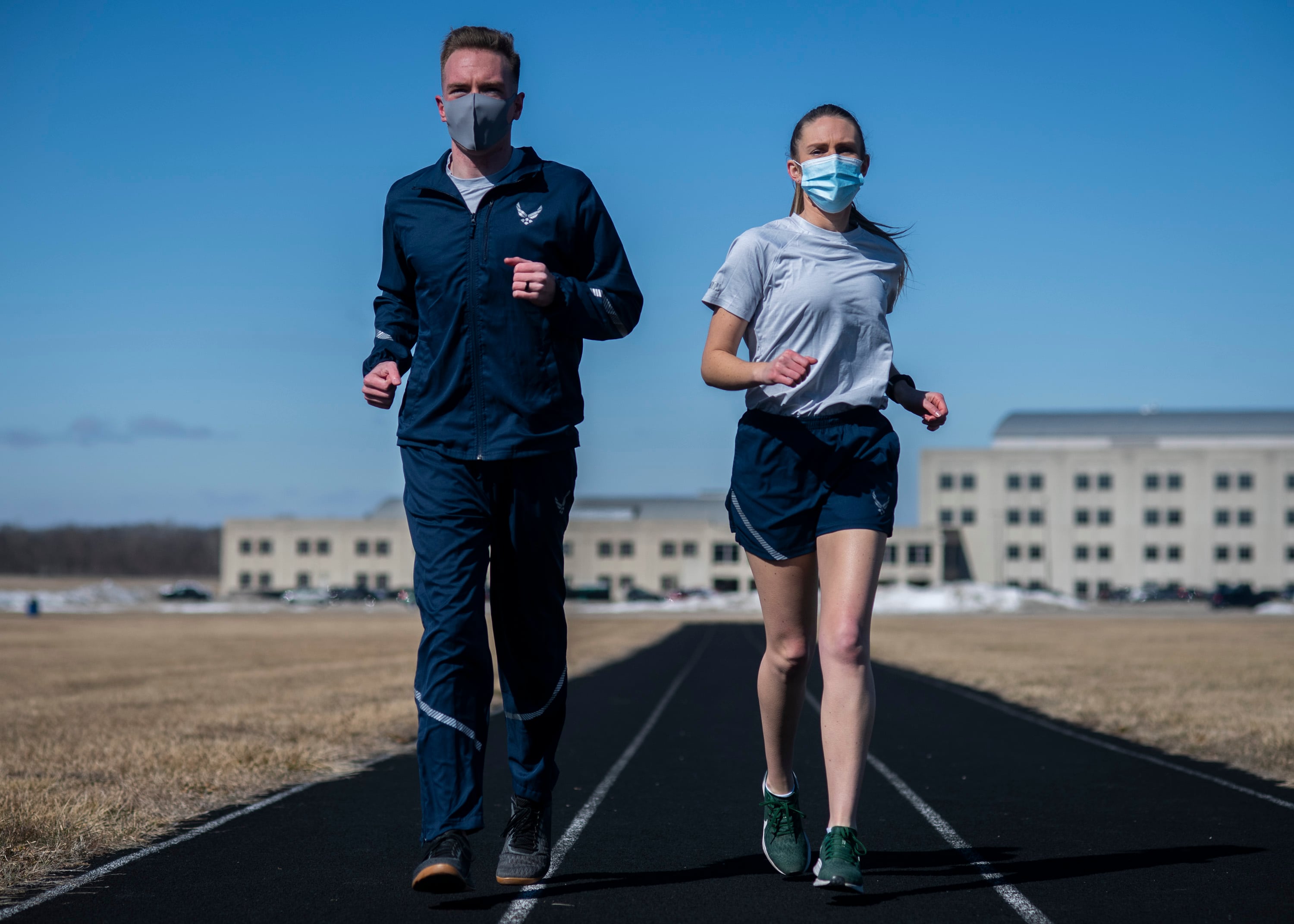A new study out Tuesday encourages the Air Force to retool parts of its fitness test to incorporate more practical measures of everyday health, while keeping features like the 1.5-mile run.
Researchers at the federally funded think tank Rand Corp. argue the Air Force should launch its own trial to look at new ways of measuring fitness. While the current test is practical, they said, there’s more the Air Force can do to tailor its criteria for certain groups of airmen and to make sure the process is safe.
Analysts likewise questioned whether testing standards are appropriate for all airmen across age and gender, and whether those standards are consistently enforced.
“No single test is best for any given physical fitness component,” researchers wrote in the April 6 report. “However, some tests may provide some advantages in terms of injury risk, cost, ease of administration, perceived fairness, reliability and validity.”
When physical fitness tests resume July 1 after a pandemic-safe hiatus, airmen must tackle a 1.5-mile run plus one minute each of pushups and situps. The waist measurement portion of the test will no longer count toward someone’s overall test score, but will still be administered to see if the airman meets body composition standards, the Air Force said in March.
RELATED

Those changes come as the Air Force wants to encourage holistic, functionally fit lifestyles rather than see airmen fall into rote movement that can lead to injury — particularly when cramming for the test.
“The 1.5-mile run is a valid and well-supported measure of cardiorespiratory fitness,” Rand said, noting the review did not consider the time limits placed on airmen to finish their runs. Still, the analysts endorsed the service’s look at alternatives like a shuttle run or rowing machine to measure the same metrics.
Rand suggested using waist-to-height ratio as another measure of body composition. Height and weight measurements will resume in October.
The report backed situps and pushups as “acceptable measures of muscular endurance,” but said the Air Force can do more to assess muscular strength. Analysts raised the idea of using planks instead of situps to measure core stability, and turning to squats, deadlifts and lunges to measure muscular strength and endurance.
“Including it should be considered to ensure that airmen can perform common military tasks during deployment,” researchers wrote.
RELATED

That recommendation goes hand in hand with another Rand suggestion: come up with a better way to gauge whether airmen have the endurance and agility to deploy overseas. The think tank suggested that the Air Force look at creating a predeployment fitness test that would be separate from a baseline exam that vets routine health.
“The AF does not fully address the physical fitness of airmen for advanced deployments, specifically to hostile or uncertain environments,” Rand wrote.
To ensure airmen don’t fail the test on purpose to avoid deployments, the report suggested incentivizing good fitness through perks like time off and extra pay.
“There is a need to better understand the role of different levels of AF leadership … on the physical fitness among today’s airmen,” the report added. “Is the communication provided to airmen about the importance of fitness effective? Does the AF have a culture that supports and reinforces fitness?”
“These are important issues that complement an [Air Force fitness assessment] that is only administered to airmen once or twice a year.”
Rachel Cohen is the editor of Air Force Times. She joined the publication as its senior reporter in March 2021. Her work has appeared in the Washington Post, the Frederick News-Post (Md.), Air and Space Forces Magazine, Inside Defense, Inside Health Policy and elsewhere.




